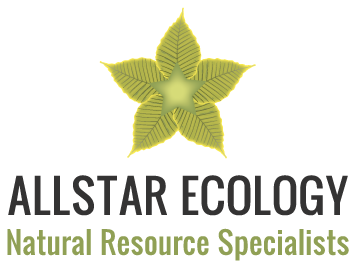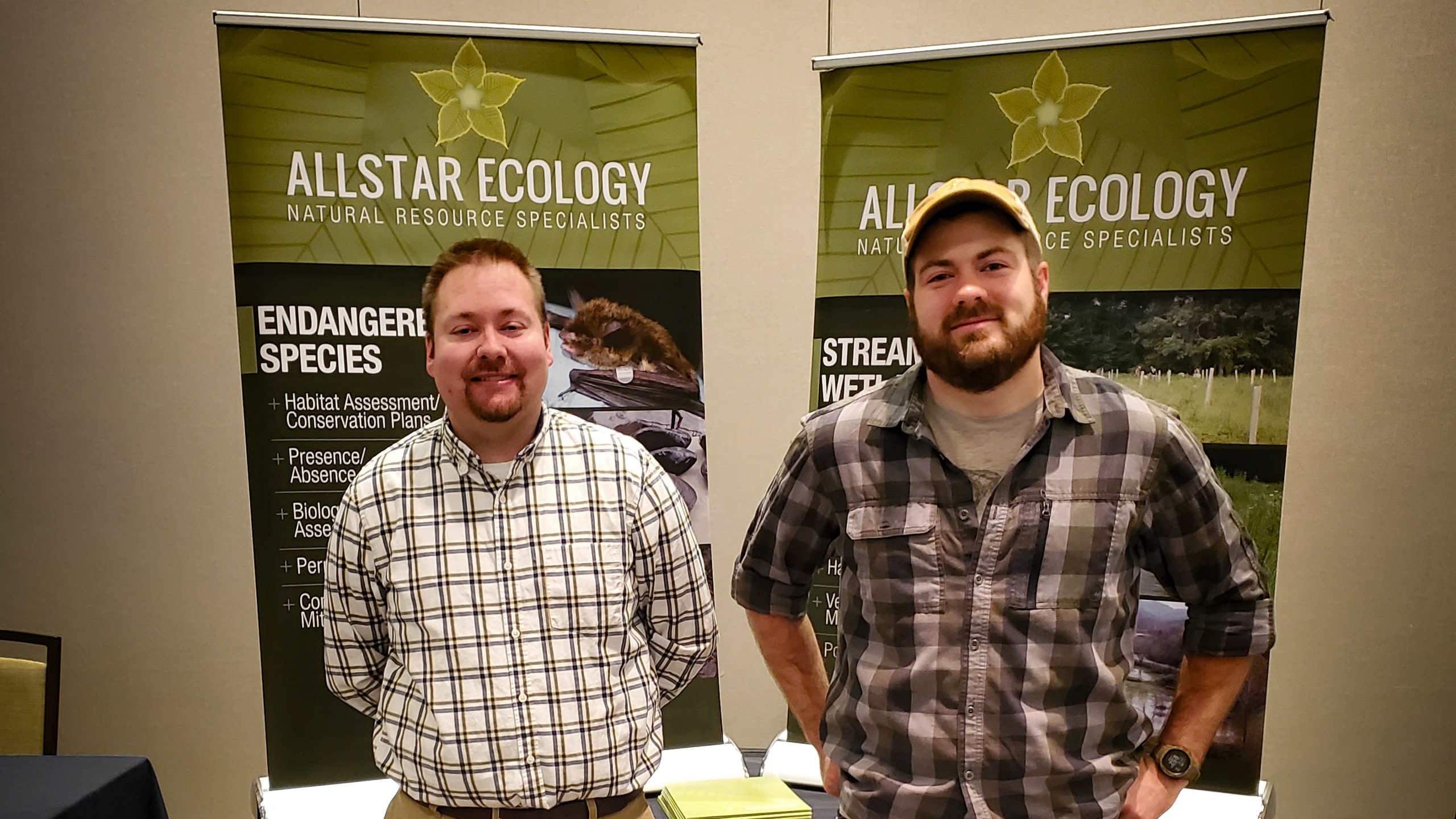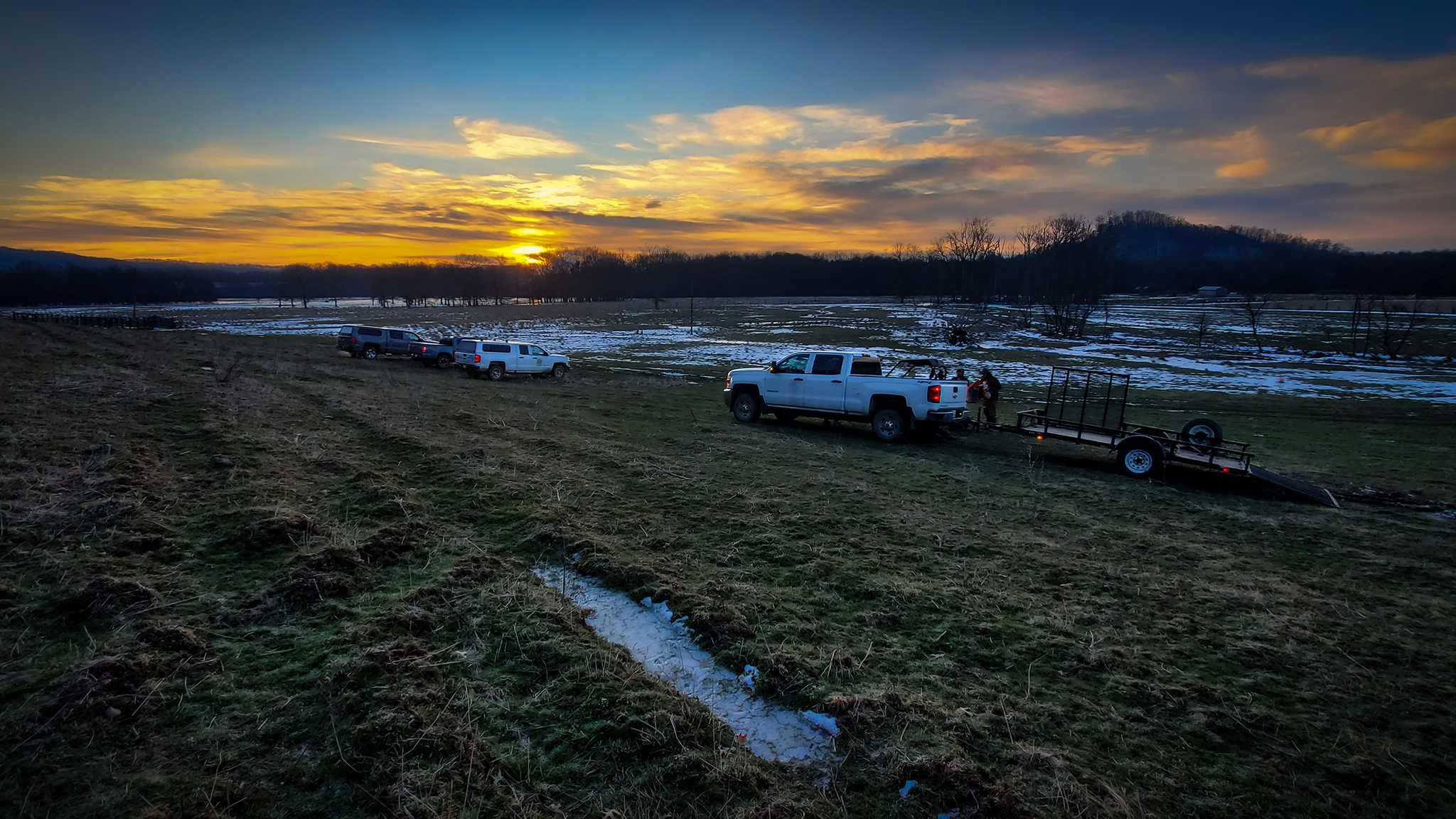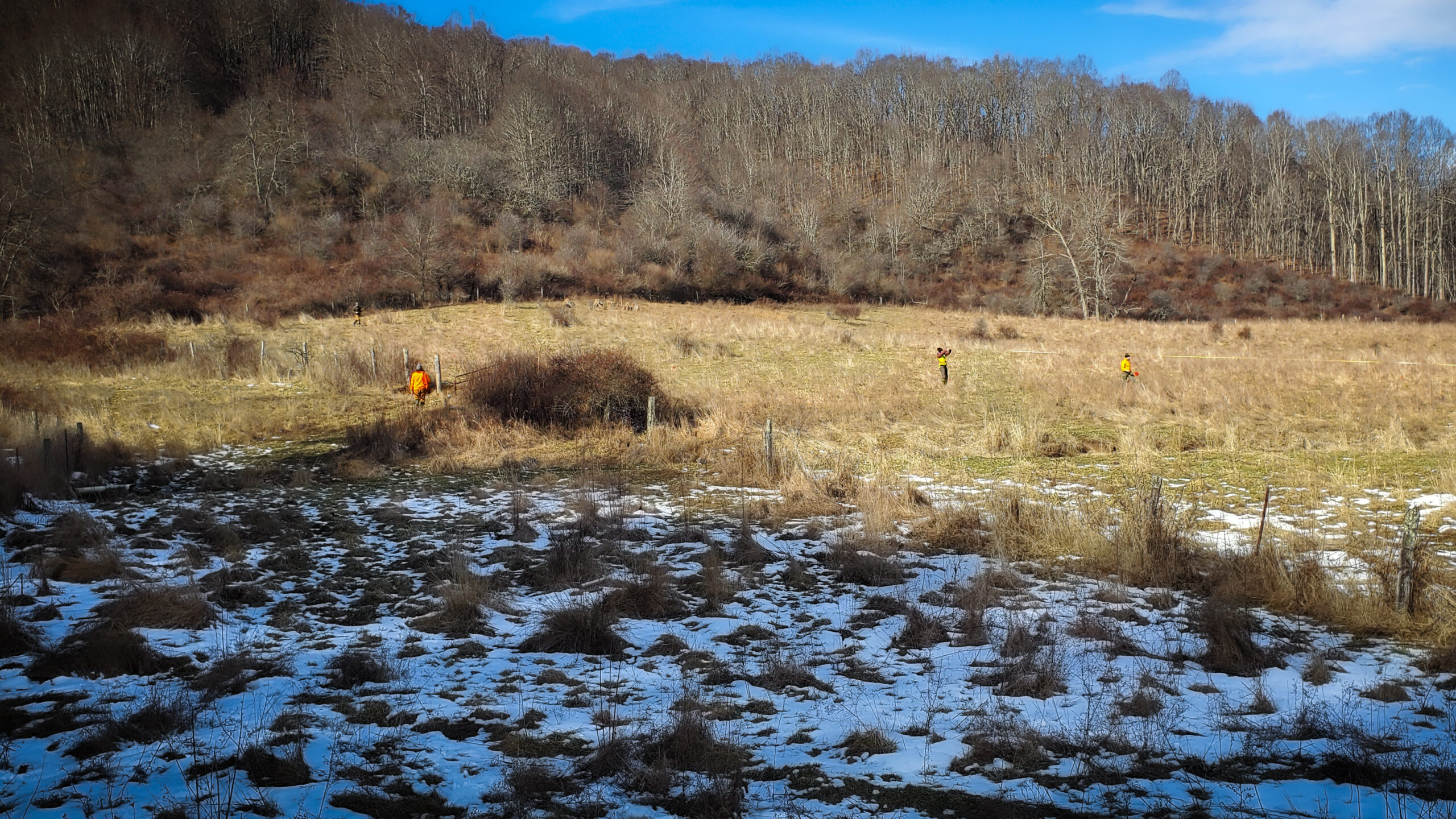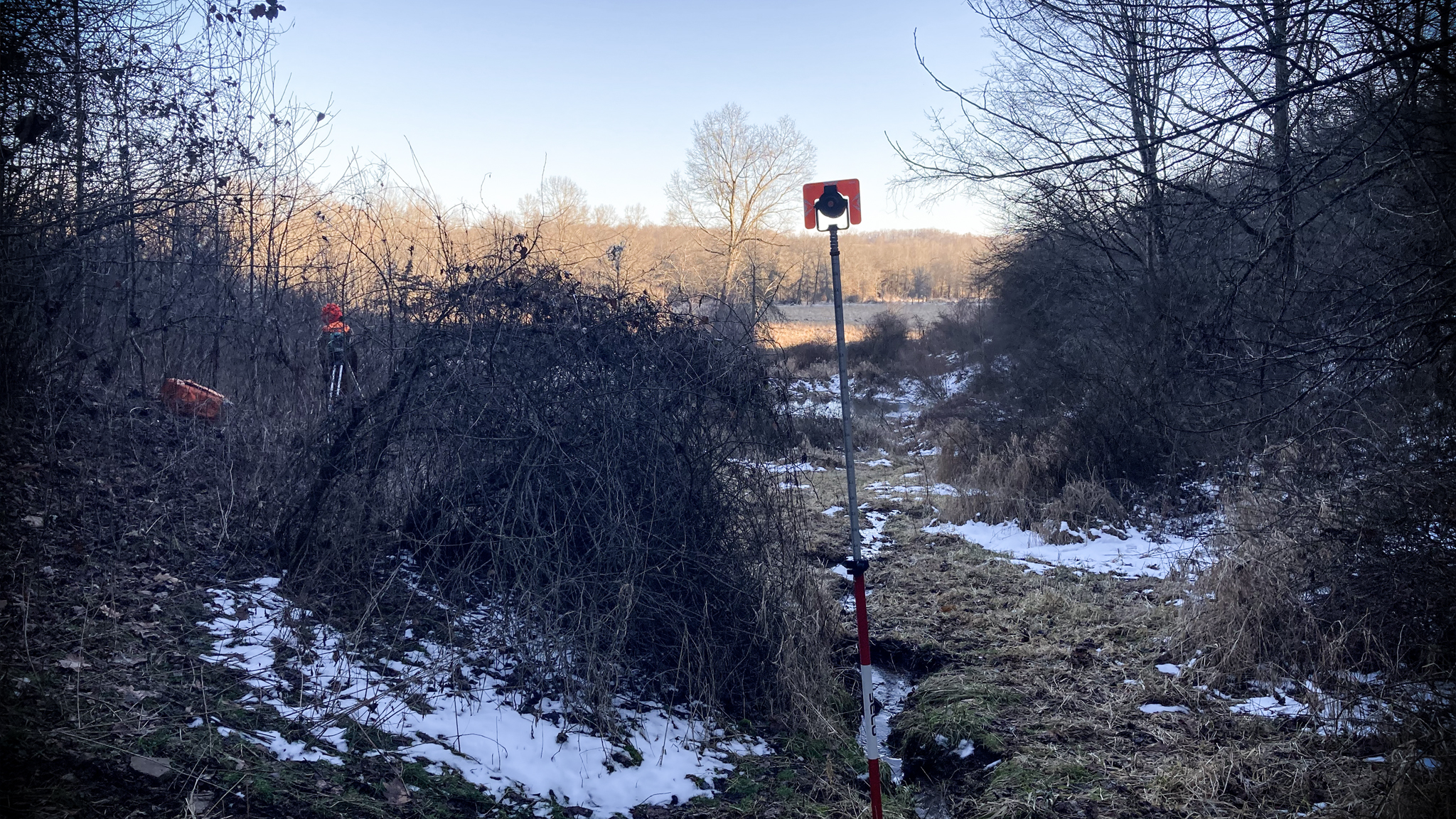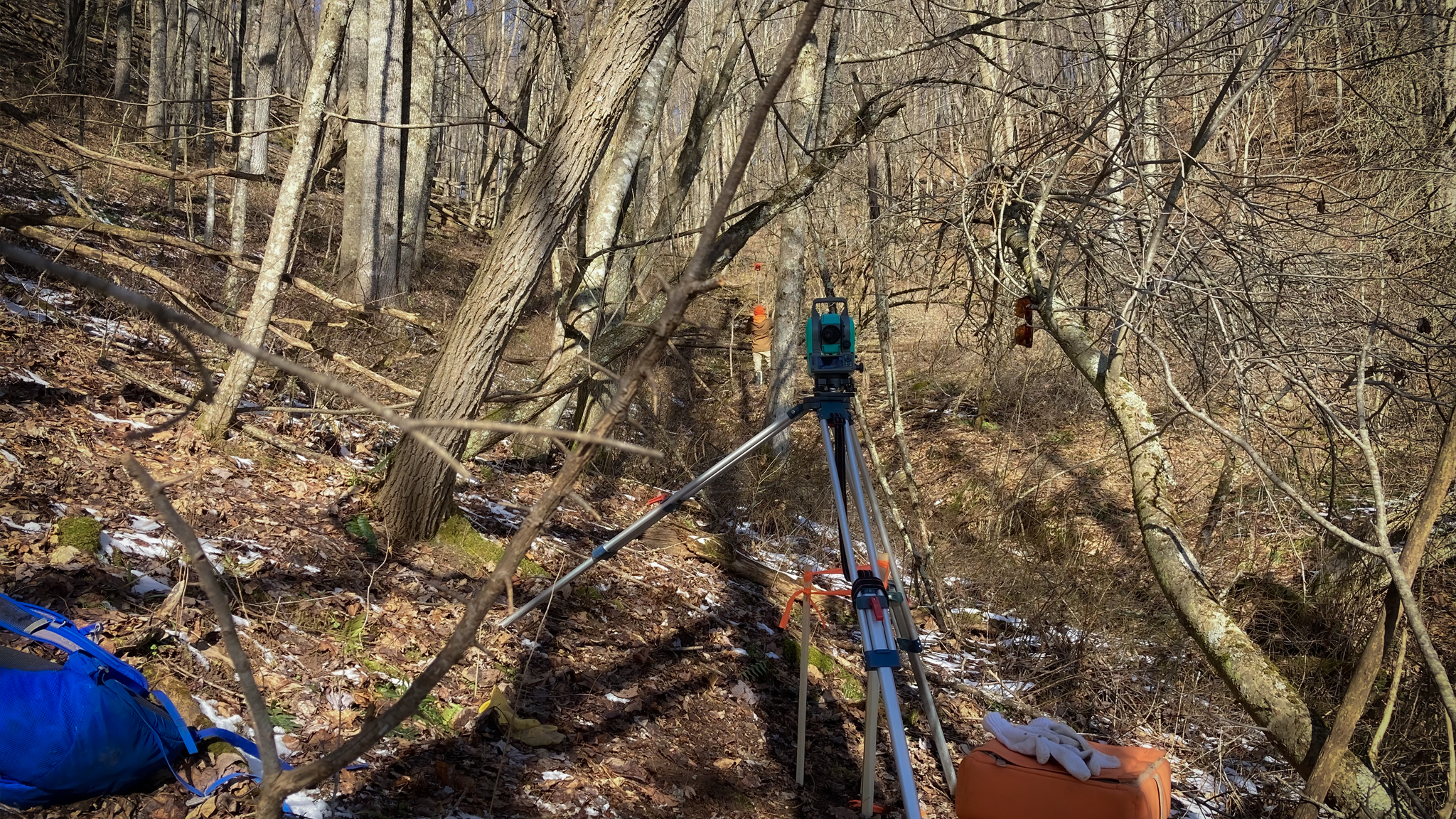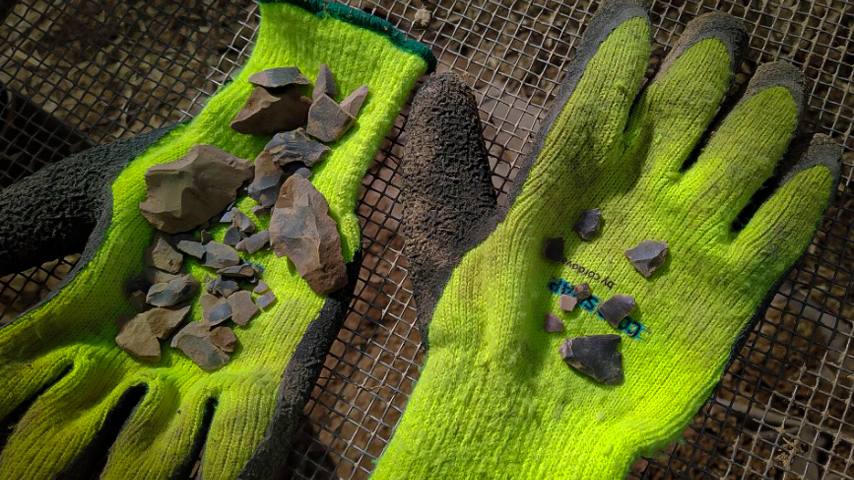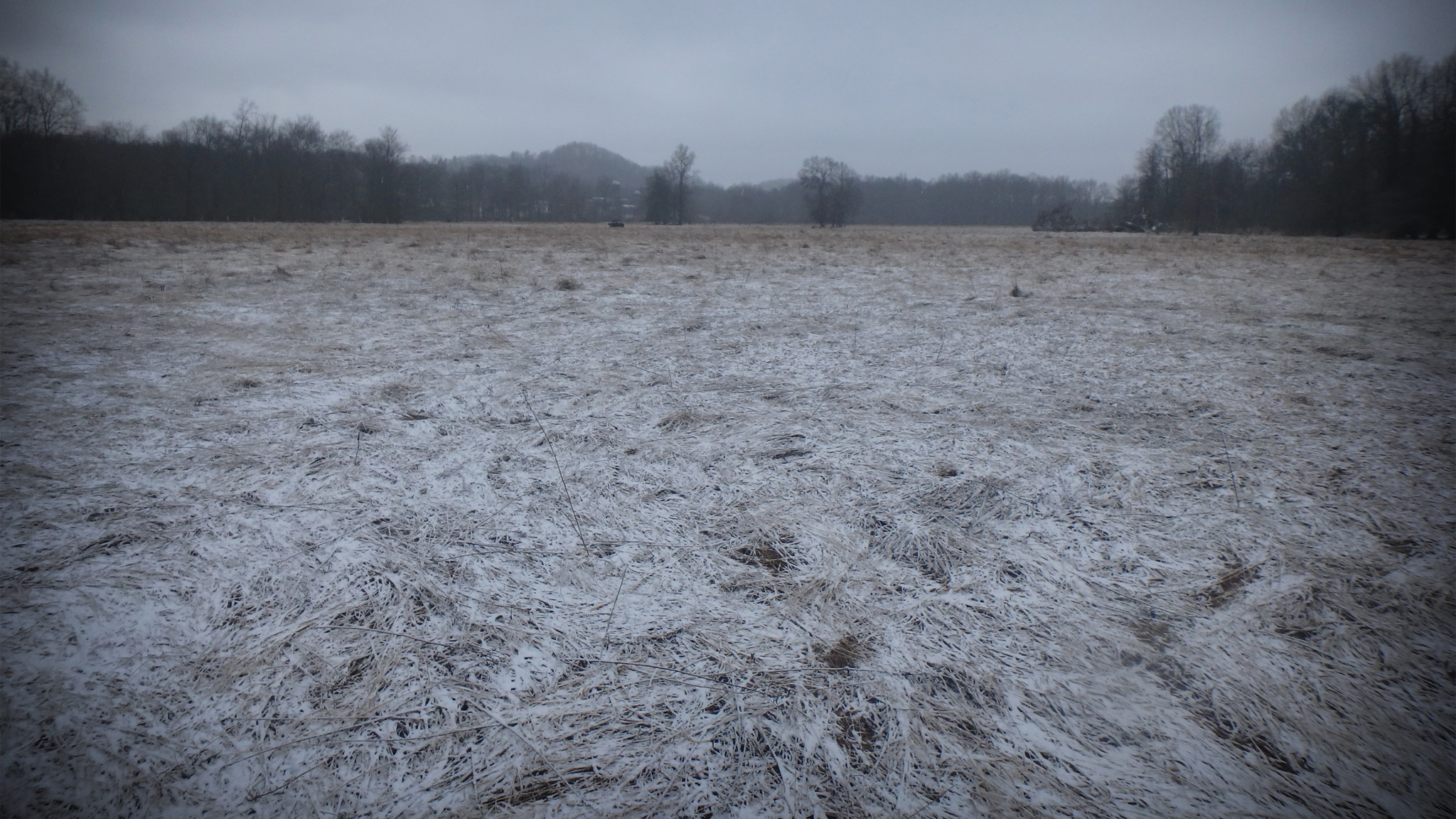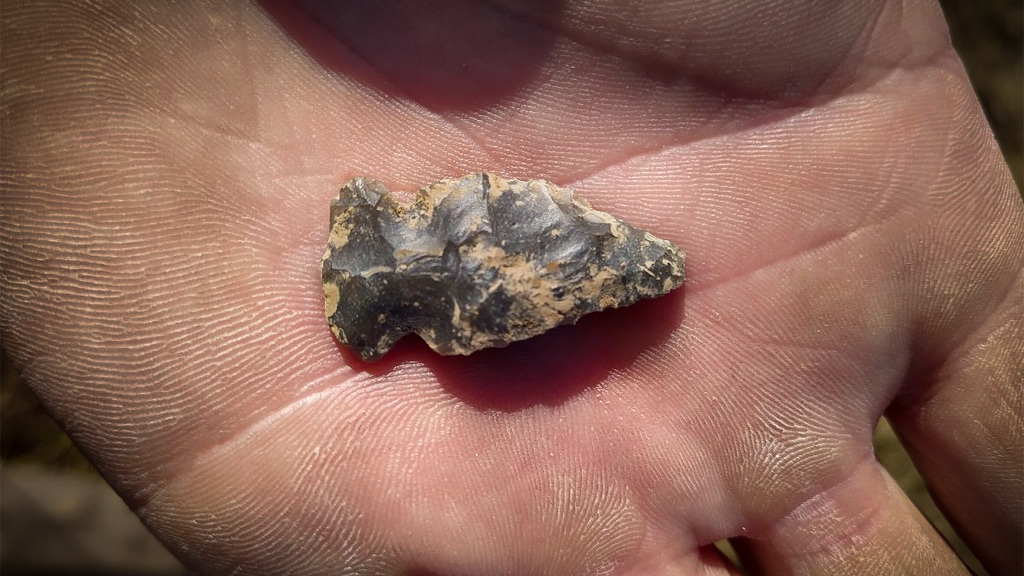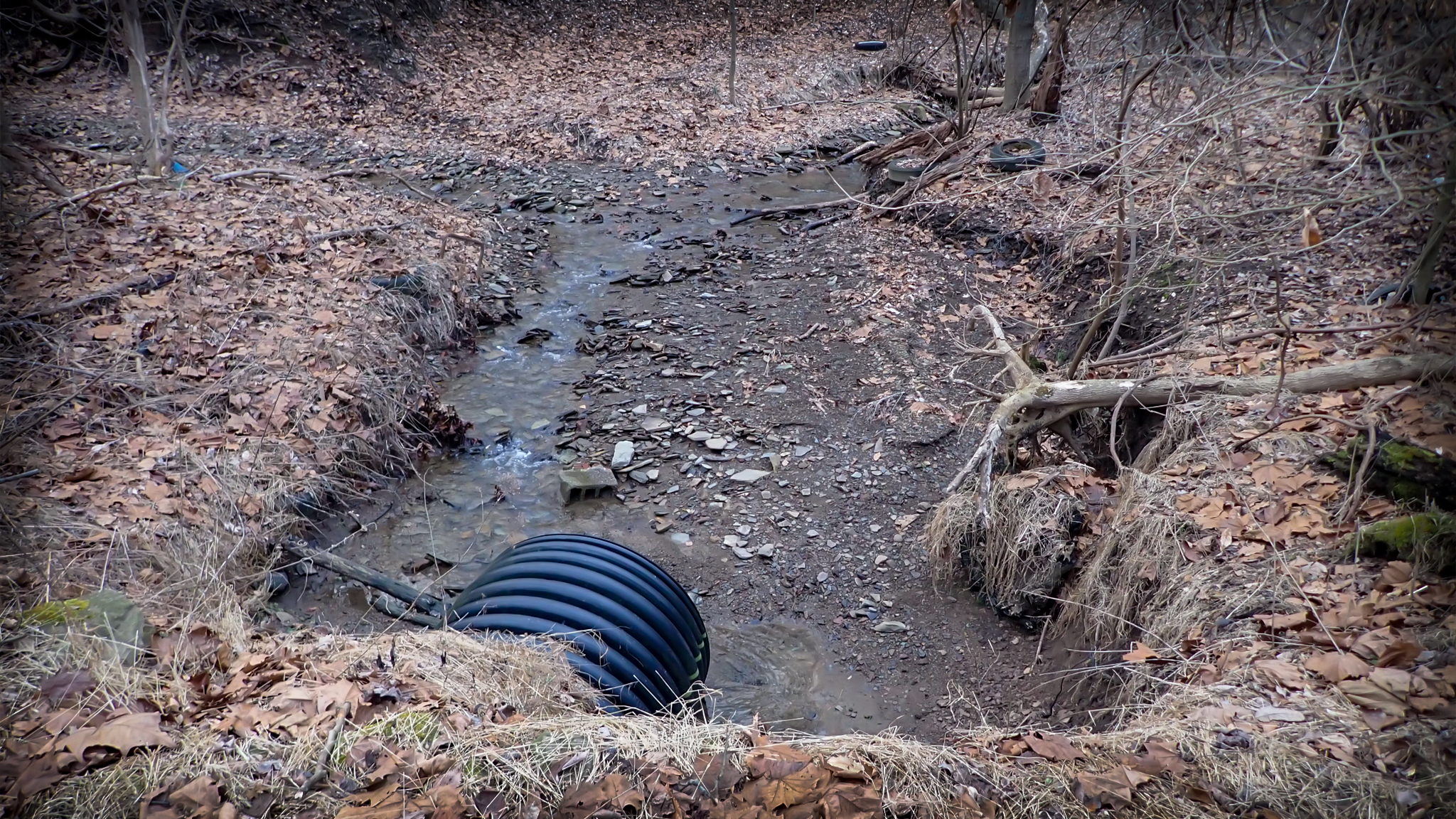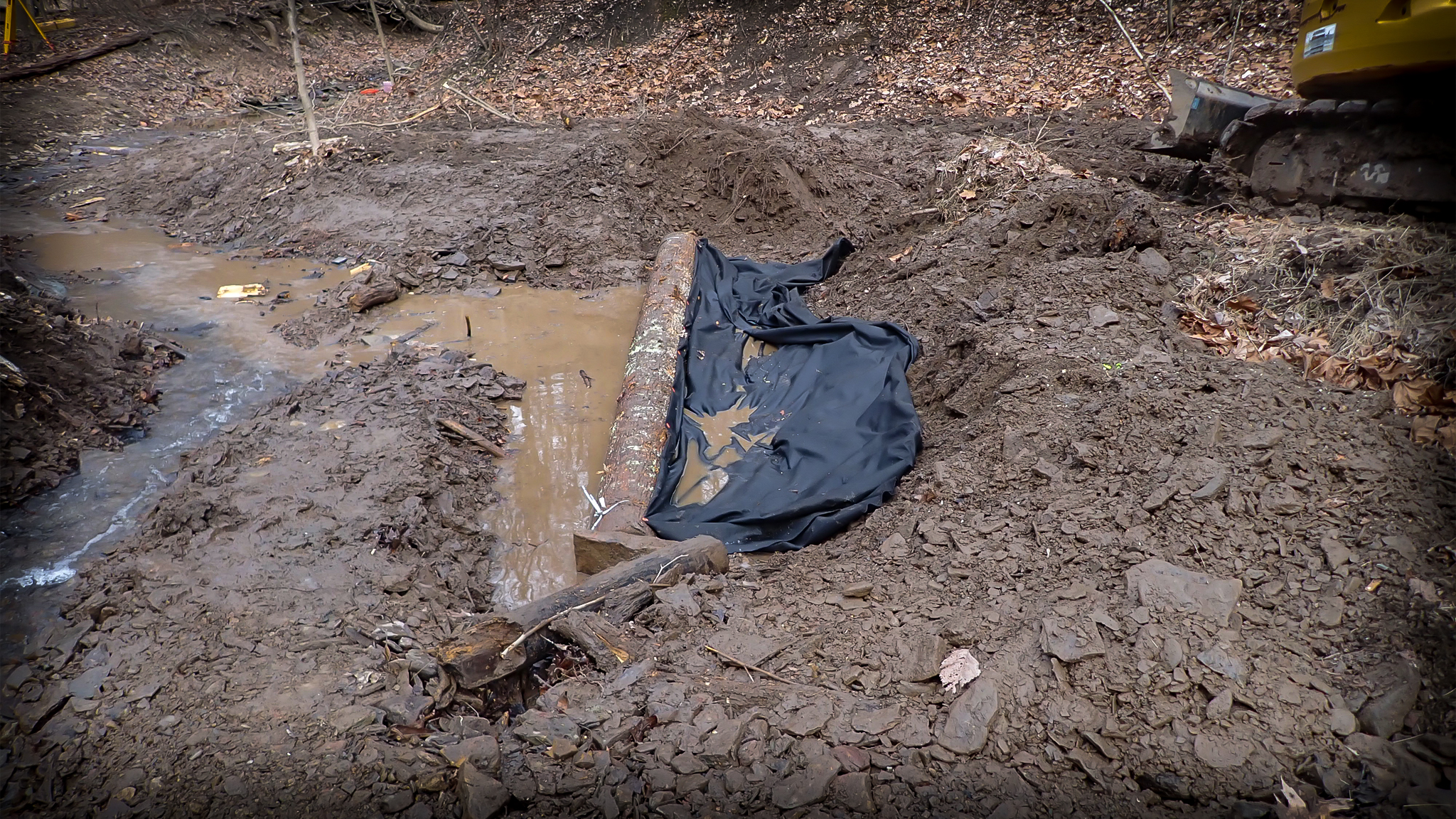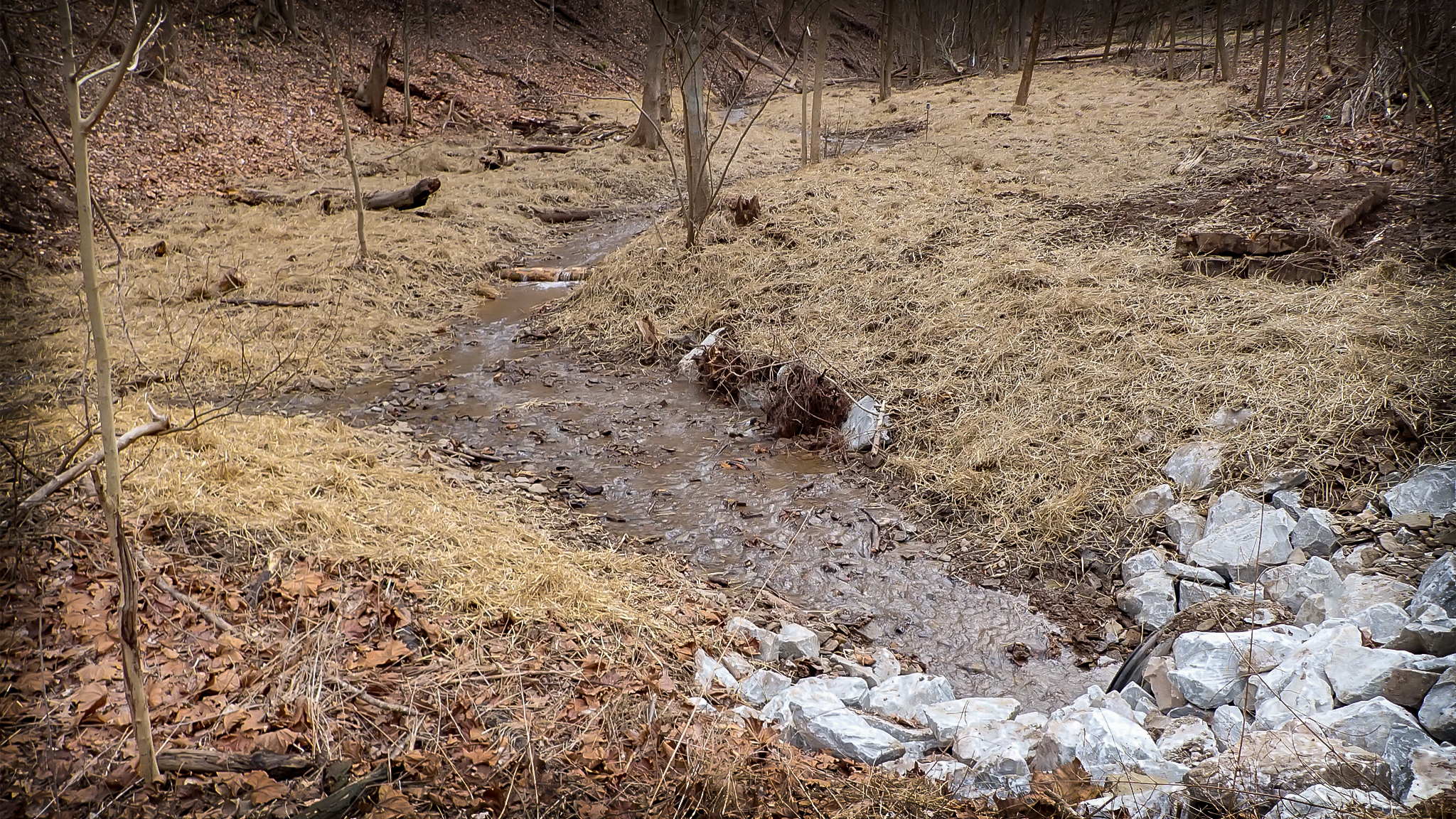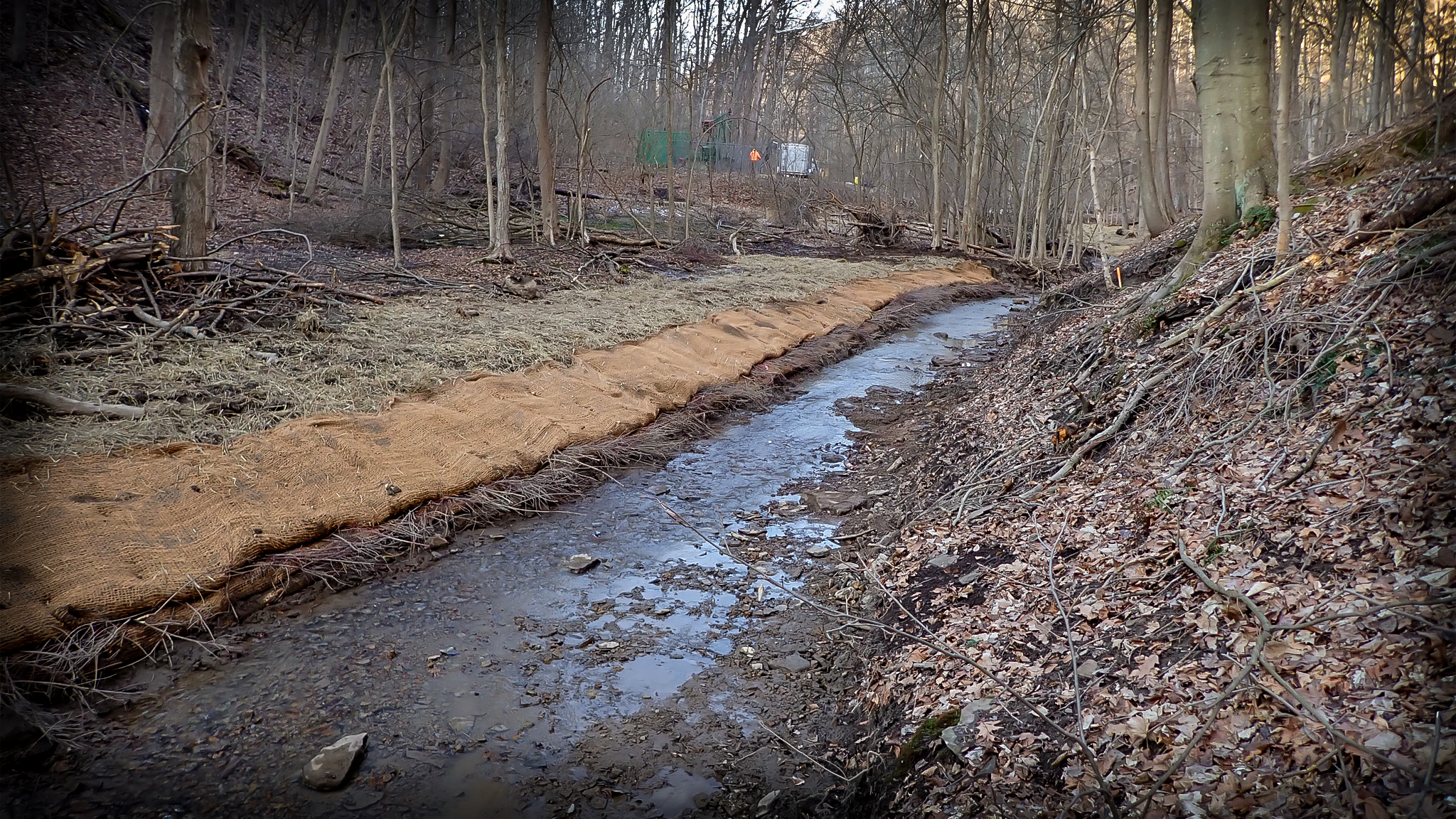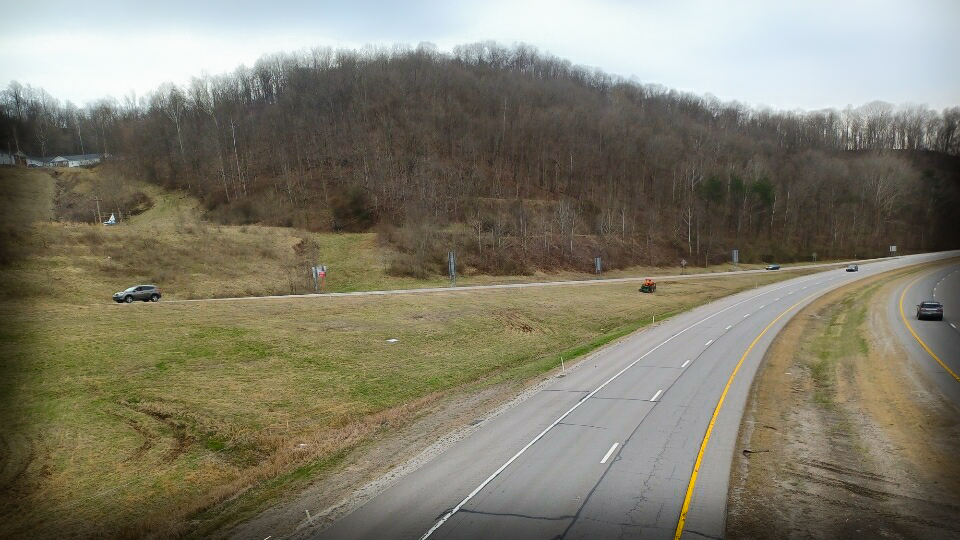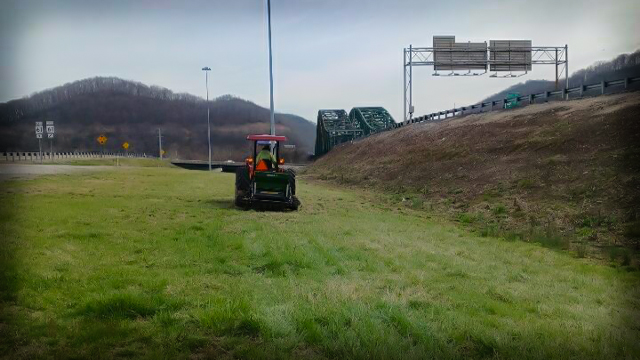by ALLSTAR | Mar 1, 2022 | Botany, Cultural Resources, Mitigation & Restoration, News, Permitting, Stream & Wetland Permitting, Vegetation Management
North Eastern Bat Working Group (NEBWG) Conference
Our Bat Crew delivered a presentation and poster at the NEBWG conference in January. They covered our findings for different methods of snag creation for bat roosting which took into account tree species, tree girdling methods, and time for a tree to be considered suitable based on decomposition. The study built on previously tested snag creation methods and sought to fill gaps by studying the time needed to create snags using two different methods across three genera of trees and determine the effect of tree species on the creation of snags when paired with the two methods. The findings were also published in the peer-reviewed, open-access journal Forests alongside other papers focusing on the “Effects of Forest Management Practices on Bat Habitat and Community Structure.” The paper can be found here for more details.
Greenbrier County Mitigation Bank Existing Conditions Survey
In February, we were back at it in Greenbrier County to gather topographic and reference reach data to start our designs for the mitigation bank portion of land along the Meadow River. Our teams surveyed roughly 28.5 acres covering 3 valleys. These points help to field truth elevations and boundaries acquired from preliminary GIS data. After taking our almost 3,000 points back to the office, we will use reference data gathered from a nearby stable stream to begin designing for ~750 linear feet(LF) of restorative intervention along the original channel and the creation of ~3,000 LF of new channel to re-establish the historic morphology that has deteriorated over the years. We will also enhance ~3,900 LF of existing channel and preserve an additional ~1,000 LF of intermittent/ephemeral streams on site.
Greenbrier County Mitigation Bank Archeological Survey
Our hardworking Archaeology Crew was right there alongside our Survey Crew doing a Phase I archaeology survey. Over the course of two weeks, they excavated 373 Shovel Test Probes (STPs) covering approximately 14.5 acres of testable area. From those, 77 positive STPs yielded several prehistoric stone tools and spearpoints, hundreds of flint flakes, a hammerstone, and several kilograms of Fire Cracked Rock (FCR). These STPs define the boundaries of three prehistoric lithic scatters and two isolated prehistoric finds which will allow for the development of the project to proceed while protecting our state’s cultural resources.
Tucker County Aquatic Organism Passage Enhancement
AllStar Ecology has been contracted to design an Aquatic Organism Passage Enhancement Project in Tucker County, WV. The project will involve removing existing degraded dual culverts and installing a pre-engineered bridge to daylight the stream and provide natural substrate and habitat for aquatic organisms including Brook Trout (Salvelinus fontinalis).
Upshur County Mitigation Bank Green Light
AllStar recently received the green light to begin work on a 40 acre mitigation bank in Upshur County which will cover 7,176 linear feet(LF) of stream intervention. Level 1, level 3, and creation intervention will make up 30% of the stream work done while enhancement reaches make up 70% of the proposed stream work. AllStar is also planning to restore half an acre of wetlands on the site. Work is currently underway to clear invasives and prepare the site for construction.
Ohio In-Lieu Fee Mitigation Project
AllStar Ecology has been contracted to design and build a portion of a stream as well as create wetlands for a wetland, stream, and buffer restoration and rehabilitation project in Jackson County, Ohio. The project includes restoring 2,000 linear feet of stream and re-establishing roughly 5 acres of forested wetland. AllStar will also be taking measures to prevent invasive plant growth and revegetate the project site through seeding and planting of native species.
Rusty Patch Bumblebee Surveys
We are going into our 3rd year of presence/absence monitoring for a WVDOH project. Over the course of our monitoring, our botany team has been tasked with conducting bio assessments and reporting their findings along with our bee team’s habitat assessments and surveys. So far, there have been no sightings of the endangered Rusty Patch Bumblebee, but we have found a Bombus terricola which is another rare find. These surveys ensure that new construction projects are minimizing their impacts on potential habitats for endangered species. Check out one of our older posts on Facebook about our other RPBB presence/absence surveys.
Pennsylvania Bank Stabilization
This project, completed over two weeks, stabilized 500 linear feet of banks by installing stream structures to redirect flow within the channel. Our construction crew then replanted and seeded all disturbed areas to prevent erosion and destabilization. Species planted include Silky Dogwood, Red Twig Dogwood, Black Willow, and American Sycamore with the majority of planting made up of Dogwoods and Black Willow.
Highway Pollinator Planting and Management
We will also be traveling across the great state of West Virginia for a pollinator mitigation planting project which will cover more than 130 acres. We will be planting a variety of native flowers using a no-till drill and following up with invasive monitoring and management. AllStar Ecology will maintain the new planting sites for 3 years, after which we will train the new stewards to take over. Be sure to keep your eyes out for signs along interstates and highways next year, but maybe don’t stop to smell the flowers.
Pipeline Right-of-Way Archaeological Survey
The AllStar Ecology Archaeology crew conducted a Phase I archaeological survey in Marshall County along a 1.9 acre proposed pipeline right-of-way. Due to a previously identified archaeological site adjacent to the proposed pipeline, we were contracted as part of their due diligence to protect potential culturally significant land. Alternative routes for the pipeline have been considered in the event that the site meets the threshold for protection. Once a thorough investigation has been conducted, a report detailing recommendations for classification will be submitted to WVSHPO for review.

by Mark Hepner | May 14, 2019 | Mitigation & Restoration, News, Permitting, Vegetation Management |
Native Bees are Important to West Virginia
West Virginia’s native bees including bumble bees, mason bees, leaf-cutter bees, miner bees, and sweat bees are important to the pollination of most flowering trees, shrubs, and herbaceous plants within the forests and fields of the Mountain State. Therefore, our native bees are important mechanisms for feeding West Virginia’s people and wildlife. West Virginia is rich with a diversity of habitats such as large river valleys, high-elevation mountains, forests, fields, etc. that are home to a diversity of flowering plants that provide pollen and nectar for a diversity of native bees. There has been a rapid decline of bumble bee species (Bombus spp.) throughout much of North America, including some that were once common in West Virginia. This has created the need for inventories to determine the current status of all native bee species. The use of published bee research, museum specimens, and historical records coupled with field data is needed to develop a list and determine the status of West Virginia’s native bees.
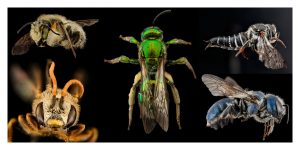 Top left: Megachile latimanus; Bottom left: Halictus ligatus; Center: Augochloropsis metallic; Top right: Coelioxys sayi; Bottom Right: Osmia texana
Top left: Megachile latimanus; Bottom left: Halictus ligatus; Center: Augochloropsis metallic; Top right: Coelioxys sayi; Bottom Right: Osmia texana
Surveying West Virginia’s Native Bees
In 2018, AllStar Ecology began coordinating with the U.S. Fish and Wildlife Service (USFWS), West Virginia Division of Natural Resources (WVDNR) and U.S. Geological Survey (USGS) to document West Virginia’s native bees. The WVDNR, the U.S. Department of Agriculture’s Forest Service (USFS), West Virginia State Parks, and private landowners granted permission for AllStar Ecology personnel to survey native bees on lands under their ownership and management. Four AllStar Ecology Environmental Scientists conducted 242 native bee surveys using hand nets within 45 of the 55 West Virginia counties that resulted in the collection of 6,377 bees. These surveys identified 124 species including a new location of the rusty-patched bumble bee (Bombus affinis), which is currently on the USFWS’s Endangered Species List (List). The male was discovered in Tucker County and with a rare color pattern. The yellow-banded bumble bee (Bombus terricola), a candidate species to be placed on the List was found at eight locations, representing the first records of this species in West Virginia since 1979. Also found were 16 species of specialist bees, which are species that only collect pollen and nectar from a specific plant species or plant group. Four species of the located specialist bees are considered to be rare. Three species that were not previously recorded in West Virginia were discovered, including a cuckoo bee (Nomada graenicheri), leaf-cutter bee (Heriades leaviti), and mining bee (Andrena illinoiensis) in Ritchie, Mingo, and Lewis Counties, respectively. This initial data is useful in determining which bee species are common and help to determine the distributions of rare, threatened, and endangered bee species. Future surveys will likely discover new species records for the state and additional locations of rare, threatened, and endangered native bee species. Click here to view the 2018 rusty-patched bumble bee collected in Tucker County, WV along with other WV native bees on the USGS Native Bee Monitoring and Inventory Lab’s Flickr page.
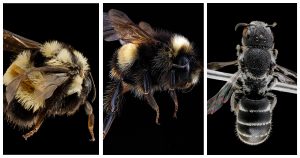 Bombus affinis Bombus terricola Heriades leavitti
Bombus affinis Bombus terricola Heriades leavitti
West Virginia, a Mountain Refuge
The rusty-patched bumble bee found in 2018 is the second to be documented within West Virginia since the 1990’s. This is encouraging that there are additional areas where the species is finding refuge within the Mountain State. The West Virginia locations, along with locations found in western Virginia over the last few years, are the only locations where the rusty-patched bumble bee is being found east of Illinois. The USFWS has a rusty-patched bumble bee map that shows the areas where the species has been found in recent years. Click here to view USFWS map.
The rediscovery of yellow-banded bumble bees in WV is also encouraging. All eight locations where yellow-banded bumble bees were recorded are within the USFS Monongahela National Forest and occur in high-elevation habitats, averaging close to 4,000 feet above sea level.
Native Bee Pollinator Awareness
With the importance of native bees to the health and well-being of West Virginia’s people and wildlife, an effort is being made by AllStar to share the data and knowledge gained from these surveys with scientists and the general public. Mark Hepner is leading this effort and has presented about West Virginia’s native bees to community groups and organizations, encouraging everyone to learn about our native bees and to provide habitat wherever possible. A key point of Mark’s message is the need to provide flowers, native flowers are best, throughout the spring, summer, and fall. This is something most West Virginian’s can provide for our native bees by mowing less frequently or not mowing certain areas to allow flowers to bloom. The more we can learn about West Virginia’s native bees, the better we can understand the role they play in pollinating our forests and fields to help keep our state Wild and Wonderful.
 Halictus ligatus
Halictus ligatus
Useful Native Bee Resources
- Colla, S., L. Richardson, and P. Williams. 2011. Bubble Bees of the Eastern United States
- Discover Life, https://www.discoverlife.org/20/q?search=Apoidea
- The Very Handy Manual: How to Catch and Identify Bees and Manage a Collection. 2015.
- U.S. Department of Agriculture, Natural Resources Conservation Service, WV Division of Natural Resources, and The Xerces Society for Invertebrate Conservation, 2012. West Virginia Pollinator Handbook. A Field Office Technical Guide Reference to management of pollinators and their habitats.
- USGS Bee Inventory and Monitoring Lab | Flickr, https://www.flickr.com/photos/usgsbiml/
- Williams P., Thorp, R., Richardson, L., and Colla, S. 2014. Bumble Bees of North America: An Identification Guide. Princeton University Press.
- Xerces Society of Invertebrate Conservation, http://www.xerces.org
References
- U.S. Department of Agriculture, Natural Resources Conservation Service, WV Division of Natural Resources, and The Xerces Society for Invertebrate Conservation, 2012. West Virginia Pollinator Handbook. A Field Office Technical Guide Reference to management of pollinators and their habitats.
- Cameron S., J. D. Lozier, J. P. Strange, J. B. Koch, N. Cordes, L. F. Solter, and T. L. Griswold. 2011. Patterns of widespread decline in North American bumble bees. Proceedings of the National Academy of Sciences 108(2):662-667.
- Evans E., R. Thorp, S. Jepsen, and S. H. Black. 2008. Status review of three formerly common species of bumble bee in the subgenus Bombus.
- Fowler, J. Host plants for specialist bees of the Mid-Atlantic and Northeastern United States. http://jarrodfowler.com/host_plants.html
- Fowler, J. and S. Droege. Specialist bees of the Mid-Atlantic and Northeastern United States. http://jarrodfowler.com/specialist_bees.html
- McKinney M. Bee Natural History, Diversity, and Management in West Virginia. Dissertation submitted to the Davis College of Agriculture, Natural Resources, and Design at West Virginia University, Morgantown, West Virginia 2016.
- Schweitzer D. F., N. A. Capuano, B. E. Young, and S. R. Colla. 2012. Conservation and management of North American bumble bees. NatureServe, Arlington, Virginia, and USDA Forest Service, Washington, D.C.
- Williams P., Thorp, R., Richardson, L., and Colla, S. 2014. Bumble Bees of North America: An Identification Guide. Princeton University Press.
- Ascher, J. S. and J. Pickering. 2018. Discover Life bee species guide and world checklist Hymenoptera: Apoidae: Anthophila). http://www.discoveerlife.org/mp/20q?guide=Apoidae_species
- The Very Handy Manual: How to Catch and Identify Bees and Manage a Collection. 2015.
- USFWS Rusty-patched bumble bee webpage. https://www.fws.gov/midwest/endangered/insects/rpbb/index.html
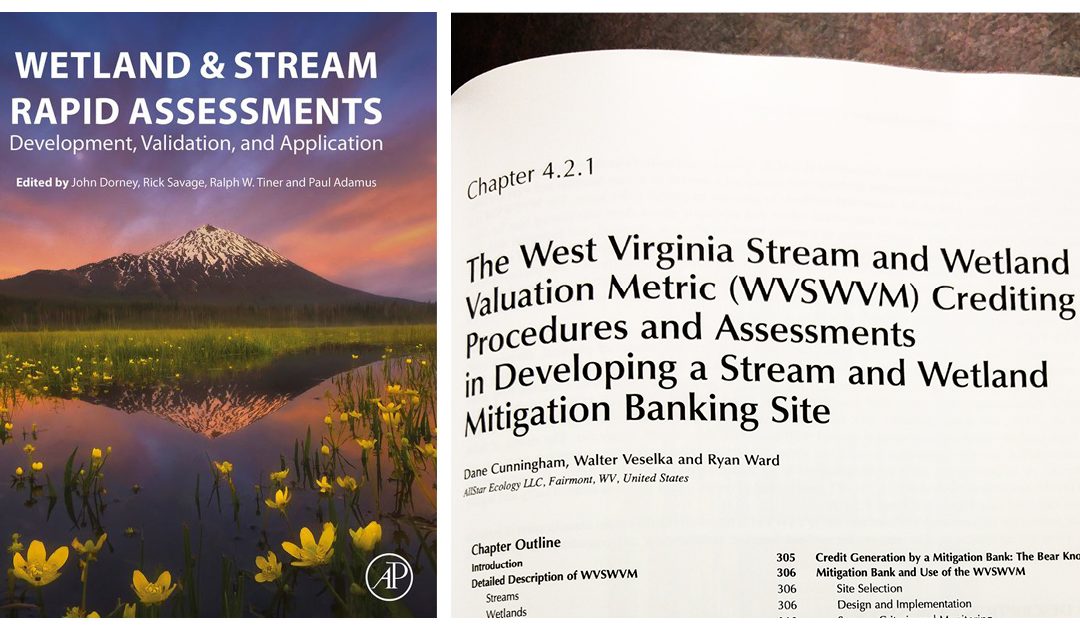
by Derek Springston | Mar 27, 2019 | Mitigation & Restoration, News, Stream & Wetland Permitting
AllStar Ecology recently authored a chapter in the professional book Wetland and Stream Rapid Assessments: Development, Validation, and Application. This book describes the scientific and environmental policy background for rapid wetland and stream assessments, how such assessment methods are developed and statistically verified, and how they can be used in environmental decision-making—including wetland and stream permitting.

AllStar Ecology’s Dane Cunningham, Walter Veselka, and Ryan Ward co-authored Chapter 4.2.1 – “The West Virginia Stream and Wetland Valuation Metric (WVSWVM) Crediting Procedures and Assessments in Developing a Stream and Wetland Mitigation Banking Site”. This chapter details the assessment methodologies that comprise the WVSWVM, use of the metric, and the framework for using with regard to mitigation banking. AllStar Ecology takes pride in being a leader in environmental consulting and research, with employee’s specialties ranging from aquatic entomology to stream/wetland restoration design and construction.
To learn more about our Mitigation and Restoration Services team, visit our Mitigation and Restoration page.
To learn more about our Stream and Wetland Permitting team, visit our Stream and Wetland Permitting page.
To read more about AllStar Ecology, visit our About Us page
TALK WITH US
Thanks for reading,
AllStar Ecology
info@allstarecology.com
304-816-3490
